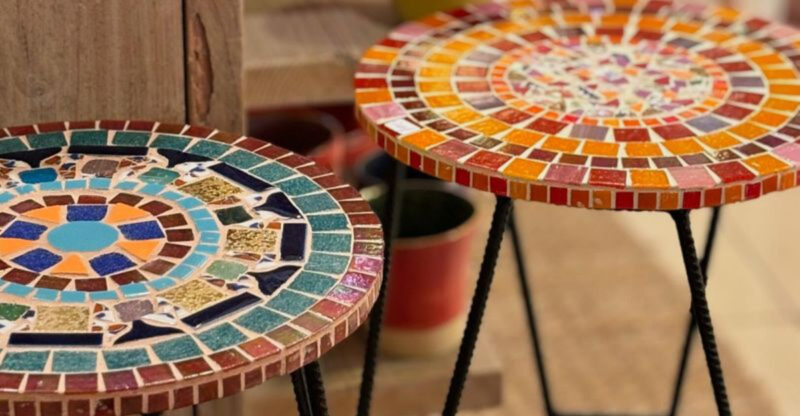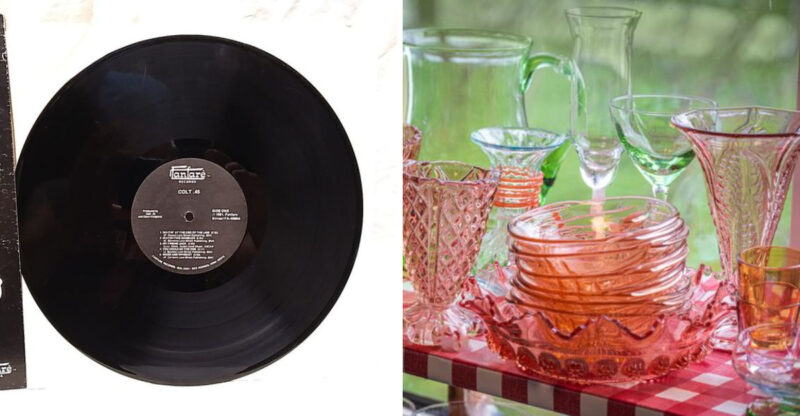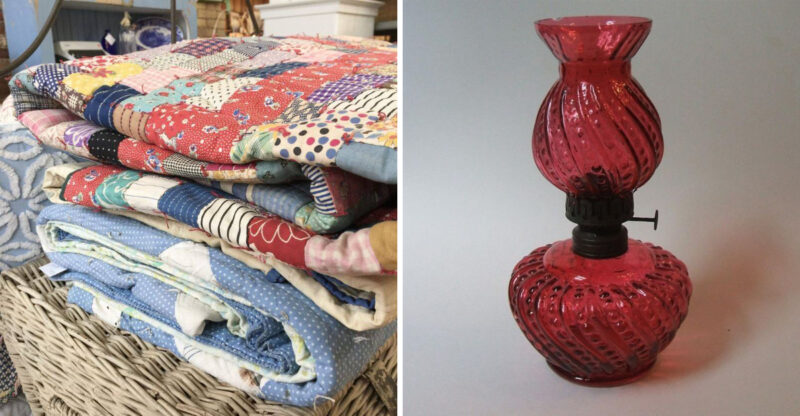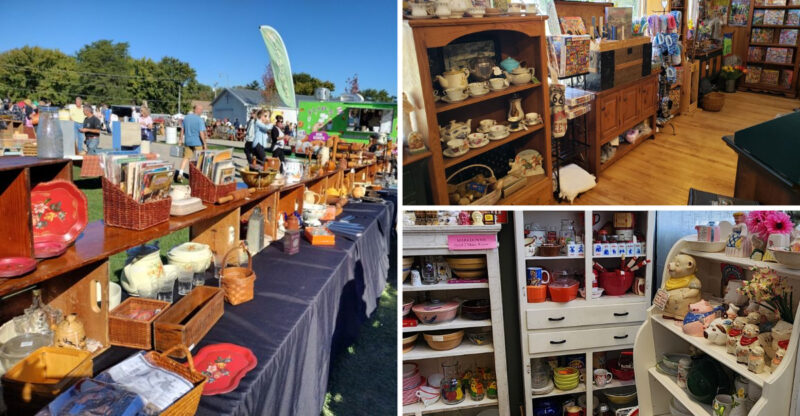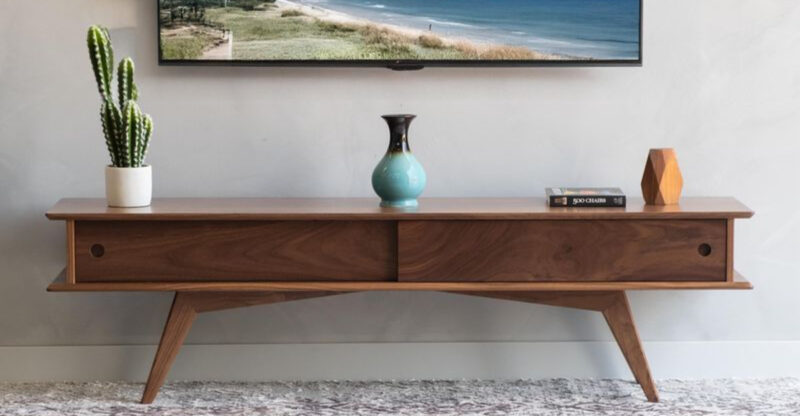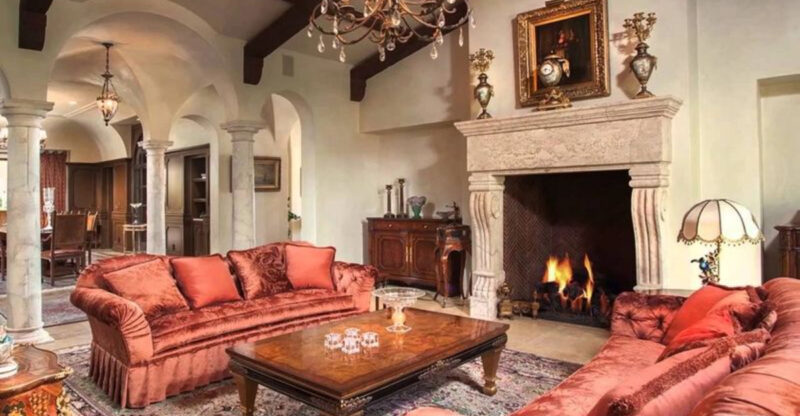14 Texas Collectibles You Should Stop Investing In (And 6 You Can Toss)
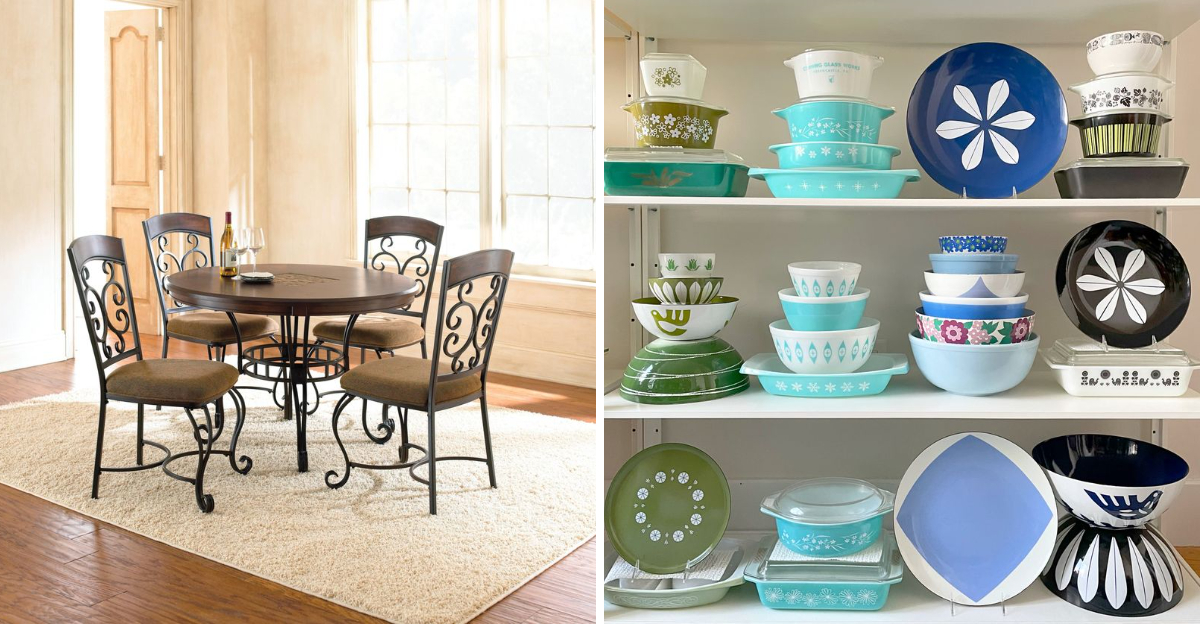
Texas has always been a place where bigger means better, and that includes our homes. But holding onto every piece of vintage furniture and décor isn’t always smart.
Some collectibles that once seemed valuable are now just taking up space and draining your wallet, while others might actually be worth keeping if you know what to look for.
1. Ornate Victorian-Era Formal Furniture
Victorian furniture seemed fancy back in the day, but modern buyers just don’t want it anymore. Those heavy carved pieces with dark finishes take up tons of room and don’t fit today’s lighter styles. Moving them is a nightmare because they weigh so much.
Repair costs are sky-high since finding craftsmen who work with these old pieces is tough. Your investment keeps shrinking as fewer people want formal dining rooms.
Storage fees might cost more than the furniture itself if you’re keeping it somewhere safe.
2. Mass-Produced Western-Themed Décor
Every gift shop in Texas sells the same cowboy boots, horseshoes, and wagon wheels. These factory-made items flood the market, making them nearly worthless as collectibles. Authentic western pieces have value, but mass-produced versions don’t.
You probably paid retail prices thinking they’d appreciate over time. Reality check: they’re dropping in value every year as trends shift away from kitschy western looks. Younger buyers want cleaner, more minimal spaces without all the cowboy clutter filling every corner.
3. Commemorative Plates And Figurines
Those limited edition plates looked special when you bought them from TV ads. Turns out, millions of other people bought the exact same ones, making them anything but limited. Resale values are embarrassingly low compared to original prices.
Storage becomes a problem since they’re fragile and need careful handling. Most collectors have moved on to other hobbies entirely, shrinking the buyer pool dramatically. Your grandkids probably won’t want them either, no matter how sentimental you feel about each piece.
4. Ornate Silver Tea Services
Silver tea sets require constant polishing to prevent tarnish, which is exhausting. Nobody hosts formal tea parties anymore, so these beautiful pieces just sit unused in cabinets. The silver market has been unstable for years, affecting their investment value.
Selling them means dealing with scrap silver prices unless you find a serious collector. Insurance costs add up since silver gets stolen easily during break-ins. Modern entertaining styles favor casual gatherings where fancy tea services feel totally out of place and awkward.
5. Heavy Dark Wood Furniture
Dark wood furniture dominated homes for decades, but now everyone wants light and bright spaces. These massive pieces make rooms feel smaller and gloomier than they actually are. Refinishing them costs a fortune and still doesn’t guarantee buyers.
Moving companies charge extra because of the weight and size involved. Your back will hurt just thinking about rearranging these monsters around your house.
Market demand has plummeted as younger generations choose sleek, modern alternatives that actually fit through apartment doorways without drama.
6. Pastel Kitchen Cabinets
Pastel cabinets screamed trendy in the past, but they scream outdated now. Mint greens, baby blues, and soft pinks clash with modern appliances and design preferences. Repainting is necessary for most buyers, which lowers your home’s value.
Original pastel finishes rarely survive in good condition after years of kitchen grease and wear. Collectors interested in authentic vintage kitchens are extremely rare and picky about condition.
Restoration costs exceed replacement costs, making these cabinets more liability than asset in today’s real estate market.
7. Sunken Living Rooms
Sunken living rooms felt luxurious and sophisticated when they were built into homes. Now they’re just dangerous tripping hazards, especially for older folks and young kids. Homebuyers see them as expensive remodeling projects rather than desirable features.
Accessibility issues make them problematic for anyone with mobility challenges or wheelchairs. Insurance companies might charge more because of increased liability from potential falls.
Filling them in requires major construction work that disrupts your entire house and costs thousands of dollars minimum.
8. Velvet Sectionals
Velvet sectionals dominated living rooms with their plush texture and bold colors. Maintaining them is incredibly difficult since velvet shows every stain, pet hair, and wear mark. Professional cleaning costs add up quickly if you want them to look decent.
Modern sectionals offer better fabrics that actually survive real family life. Resale values are terrible unless you find someone specifically hunting for vintage velvet pieces.
Storage fees exceed their worth if you’re not using them, making them expensive dust collectors in your garage.
9. Mass-Produced Depression Glass
Depression glass flooded the market during tough economic times, which means tons still exists today. Only rare colors and patterns hold value, but most pieces are common as dirt. You probably inherited boxes of it thinking you struck gold.
Chips and cracks are common since the glass was cheaply made from the start. Collectors have become extremely selective, wanting only perfect condition pieces in unusual colors.
Your collection likely contains the most common patterns that nobody wants, making garage sale prices your best option.
10. Matching Western-Themed Furniture Sets
Matching sets felt like smart purchases because everything coordinated perfectly. Today’s design trends favor mixing different styles and eras for more interesting spaces. Western themes work better as subtle accents rather than overwhelming entire rooms.
Selling complete sets is harder than selling individual pieces since buyers want flexibility. These sets scream tourist trap rather than authentic Texas style and heritage. Younger generations find them cheesy and outdated, preferring cleaner looks without all the forced cowboy imagery everywhere.
11. Cowhide-Covered Furniture
Cowhide furniture seemed rugged and authentically Texan when you bought it. Maintaining the hide requires special products and careful cleaning to prevent cracking and fading. Pets absolutely destroy cowhide with their claws, creating expensive damage quickly.
Animal rights concerns make some buyers uncomfortable with real hide furniture nowadays. Synthetic alternatives look similar but cost way less and last longer with less maintenance.
Resale markets are flooded with cowhide pieces as people redecorate, tanking values across the board for sellers.
12. Wrought-Iron Heavy Furniture And Accessories
Wrought iron looked sturdy and impressive in homes and patios for years. However, rust becomes a constant battle, especially in humid areas of Texas. Weight makes rearranging furniture impossible without help from multiple strong people.
Modern materials offer similar looks with fraction of the weight and maintenance hassles. Indoor pieces damage floors easily, leaving scratches and dents that cost money to repair.
Market interest has shifted toward lighter, more portable furniture that people can actually move themselves without throwing their backs out.
13. Star-Shaped Motifs In Décor
Stars covered everything in Texas homes for what felt like forever. Overuse made them cliché rather than charming, and buyers now see them as tacky. Removing stars from walls leaves holes and paint damage that needs fixing.
Subtlety works better than having stars on every possible surface in your house. Collections of star-themed items have minimal resale value since everyone already owns plenty.
Younger Texans want to celebrate their heritage without the heavy-handed star symbolism overwhelming their personal style and taste.
14. Novelty Petroleum/Oil-Industry Themed Pieces
Oil industry memorabilia seemed like smart Texas investments given our state’s history. Environmental concerns have shifted public opinion, making these pieces less desirable to younger collectors. Mass-produced novelty items lack the authenticity that serious collectors demand.
Corporate promotional items were made by the thousands, destroying any scarcity value. Storage takes up space that could hold actually appreciating collectibles instead.
Market interest continues declining as energy industries evolve and people focus on renewable sources rather than celebrating petroleum’s past glory.
15. Personalized Accent Walls
Personalized walls with family names or custom designs seemed creative and unique initially. Buyers don’t want your name on their walls, making homes harder to sell. Painting over them requires multiple coats, especially if you used dark or bold colors.
Textured designs create even bigger headaches since you’ll need to smooth walls first. Real estate agents actually recommend removing personalization before listing homes for sale.
What felt special to you becomes a costly obstacle when trying to appeal to potential buyers shopping around.
16. Griswold, Wagner, And Le Creuset Cast Iron Cookware
Go ahead and toss your expectations of selling these for big money. While some rare pieces hold value, most common skillets aren’t worth what sellers think. Modern cast iron works just as well and costs way less brand new.
Condition matters enormously, and most used pieces show wear that kills collector interest. Shipping costs eat into profits since cast iron weighs a ton. Unless you’ve got truly rare sizes or patterns, you’re better off using them in your kitchen than trying to cash in.
17. Vintage Pyrex And Depression Glass
You can practically toss most vintage Pyrex and Depression glass you’ve been hoarding. Common patterns flood online marketplaces, making them nearly worthless despite nostalgic appeal. Chips and scratches are deal-breakers for the few collectors still interested.
Rare colors and patterns exist, but chances are you don’t own them. Storage space costs more than most pieces are worth in today’s saturated market.
Modern glassware performs better and survives dishwashers, making vintage pieces more decorative than functional for most people nowadays.
18. Antique Egg Beaters And Brass Ladles
Antique kitchen gadgets looked cute hanging in farmhouse kitchens for decoration. Electric appliances work infinitely better, making these manual tools obsolete for actual cooking. Brass tarnishes constantly, requiring endless polishing to maintain that shiny look.
Collector markets for these items have dried up as minimalism replaces cluttered décor. Garage sales overflow with identical egg beaters that nobody buys anymore. Unless you’re using them regularly, they’re just gathering dust and taking up valuable kitchen storage space unnecessarily.
19. T.G. Green Cornishware And Mason Cash Ceramics
British ceramics felt special and imported when you started collecting them years ago. Reproduction pieces flood the market, making authentication difficult and values uncertain. Chips happen easily with everyday use, destroying any remaining collector value.
Shipping fragile ceramics costs more than many pieces are worth if selling online. Modern mixing bowls work just as well without the stress of damaging collectibles.
Storage requirements exceed practical value unless you’re actually using these pieces daily in your kitchen for actual cooking.
20. Antique Cookbooks And Culinary Literature
Old cookbooks seemed like treasures full of lost recipes and kitchen wisdom. Digital recipes available free online have eliminated most people’s need for physical cookbooks. Stains and worn pages are common, drastically reducing any potential collector value.
First editions from famous chefs hold value, but standard community cookbooks don’t. Storage space is better used for books you’ll actually read and reference.
Unless you’ve got something genuinely rare, you can toss most vintage cookbooks without losing any real investment value whatsoever.

